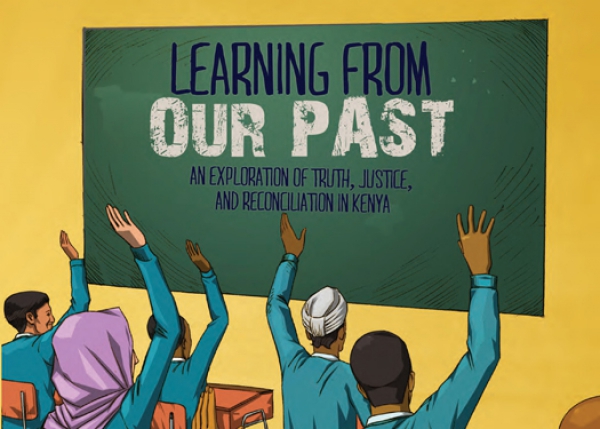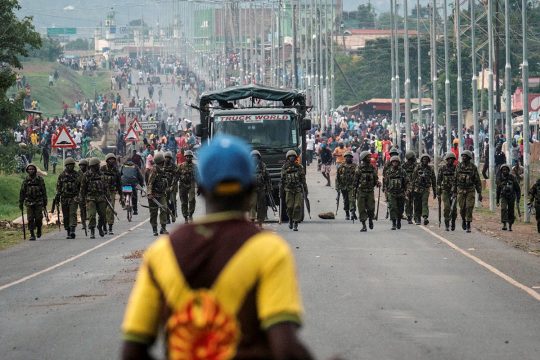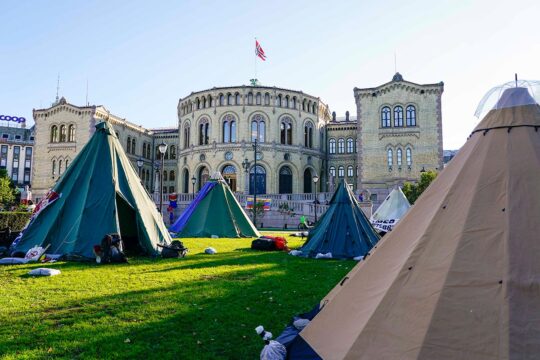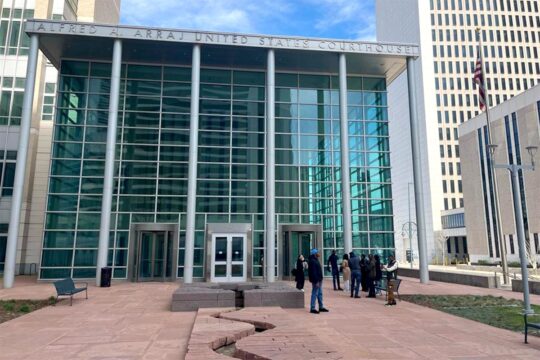The International Center for Transitional Justice (ICTJ) recently produced an educational handbook to help young Kenyans discuss and learn about their country’s troubled past. Its lessons are drawn from the work of Kenya’s Truth, Justice and Reconciliation Commission (TJRC), which heard testimonies from children as well as adult victims of human rights abuse.
This Commission was set up in 2008, following deadly ethnic violence that swept the country after presidential elections in December 2007. Its mandate was to “investigate, analyze and report on what happened between 1963 and 2008 in regards to gross violations of human rights, economic crimes, illegal acquisition of public land, marginalization of communities, ethnic violence, the context in which the crimes occurred, and educate the public about its work”. The TJRC did not have the power to prosecute, but could recommend prosecutions and reparations for victims. In the course of its work, the Commission collected 42,465 statements and 1,828 memoranda from Kenyans and conducted public hearings all over the country. Its final report was not handed over to the president until May 21, 2013.
The handbook titled “Learning from Our Past: An Exploration of Truth, Justice and Reconciliation in Kenya,” was created in partnership with Facing History and Ourselves, in collaboration with Kenya’s National Cohesion and Integration Commission. It presents Kenyan history to students aged 14-18 using discussion questions, accessible language and illustrations by Kenyan artist Maurice Odede. For example, it starts with a chapter on identity. Using the personal stories of several young Kenyans, it invites students to look at how their identities are formed, how they see themselves and how this may affect their behaviour. Other chapters look at such issues as belonging to a group, including the question of ethnicity, before moving on to “history and human behaviour”, the TJRC and “looking to the future”.
JusticeInfo.net asked Virginie Ladisch, head of ICTJ’s Children and Youth program, about the aims and origins of this new handbook.
Viginie Ladisch: Learning from past Truth Commissions that have involved children and youth, often the final report, the final product of that Commission is largely inaccessible to children and youth and actually to most adults, frankly, because they are often multi-volume tomes that are very important for the record of the country and used by researchers but not so accessible to the general population. So we really thought it was important to take the participation of children and youth to the next level and ensure that something came out of this process that they could engage with. You know, the whole idea behind having a Truth Commission is to really understand what happened in the past, what led the violations to occur, in an effort to ensure the structures that were in place are reformed, that there’s a new sense of respect for human rights so that these violations don’t occur again. And so if there is going to be that learning, we feel very strongly that it needs to start also with the children and youth who, in a few years if not already, will be voting, making decisions for their country, perhaps running for positions of leadership.
JusticeInfo.net: Have you tested it yet on Kenyan 14 to 18 year olds?
VL: Yes, when we were finalizing it we held a validation workshop in Kenya with those who had been involved in the Truth Commission, so child protection agencies. We also brought teachers and we took it to three different classrooms to gauge with the students their level of understanding and level of interest in some of these issues. What we found was that words like nepotism were very familiar to them, which I don’t know if the average 14-year-old in the US or Europe would know, so they were already quite astute to some of the challenges facing the country, and interested in this.
JusticeInfo.net: Some of these issues are very difficult, they might provoke strong emotional and psychological reactions from children. How do you deal with that?
VL: Yes that is something we discussed a lot. We presented this tool to the Kenya Institute for Curriculum Development. They’re the ones tasked with developing the national curriculum for Kenya that’s used in both public and private schools, as well as some of the content in informal education spaces. And it’s something they raised concern over. Our sense is that there is a need to balance protecting children from difficult material and also their right to participate in discussions that are relevant to them. There can be a risk that we underestimate the capacity of children to discuss these issues, because in many cases they are already living them, but not understanding where they stem from. However, we did discuss the fact that some of the trauma, the issues from the post-election violence haven’t been dealt with, they are still quite raw. So also the teacher really has to gauge what his or her group of students can and can’t discuss.
JusticeInfo.net: The handbook covers the ethnic issue quite specifically. Isn’t there a risk that this could create more division?
VL: We worked closely with our colleagues and the head of our Kenya office reviewed it specifically with that in mind: What is it appropriate to say in this booklet at this stage of Kenya’s own process of dealing with this recent history? We made sure that the way we discuss ethnicity is balanced and tried to paint the general picture without naming only some groups and not others.
JusticeInfo.net: You refer a lot to the Truth Commission in Kenya, but it was quite controversial, wasn’t it?
VL: Yes it was. The credibility issues came up in relation to the Chair of the Commission who, as you may be aware, stepped down at some point, then came back at the end and there was some censoring of the final report. That was what was problematic but if you look at the report in general, it’s a very well done report, thoroughly documented. For a long time no one would really talk about the TJRC, but our sense is that the climate changed a little bit last April when the President issued an apology and called for the implementation of the TJRC recommendations. As you said it’s still very contested, it’s still very raw, but I think that’s not a reason to shy away from talking about it because as I said, the youth we talked to in Nairobi actually said this is important but we need to know more about it, this is scratching the surface. They’re aware of these issues, they lived these issues, but there has been no space to discuss it and we believe it is important to open those spaces in a way that’s constructive, that encourages critical thinking and that encourages positive action in the future.
JusticeInfo.net: You don’t mention the International Criminal Court, the fact that the current President was charged, although the charges were dropped, and the Deputy President is on trial for alleged involvement in the post-election violence. Isn’t that something that teenagers will be talking about, will want to talk about?
VL: Yes, that’s something we debated a lot internally. We had included some mention of it but then felt we weren’t able to do justice to it and we wanted this to be more about what’s happening in Kenya. If the TJRC has been a contentious issue then the ICC even more so. It’s also a balancing act, we are trying to get this to be used in schools. Doing work like this is about gauging where the country is in its process. What are the windows that are open, how can you try and push those open a bit more without pushing so much that they slam back in your face.
JusticeInfo.net: Do you plan to produce a similar handbook for other countries?
VL: Yes, we’re looking ahead to Colombia. The peace process seems to be moving ahead quite well and they have called for a Truth Commission to be included in the peace deal. There are already groups there thinking about how to integrate this into the education system, the education tools. So I think that would be a place where we could do something similar, perhaps in a different format. We’ve also been in discussion with the Canadian Truth and Reconciliation Commission which just finished its work a few months ago. They now have a research centre that’s interested in doing a multimedia youth report that they’re going to take the lead on, but we’re also giving them some ideas from our work in other contexts.







